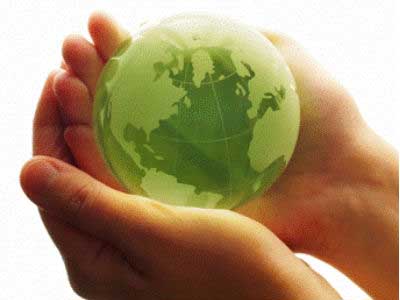How to use ecolabels
We can choose products and services that have a minimal effect on the environment and a smaller ecological footprintDo you know how ecolabels work? Ecolabels, also known as ecological labels, help us to learn about the environmental aspects of a product. Thus, we can choose products and services that have a minimal effect on the environment and a smaller ecological footprint so that the impact of our consumption on the earth will be as small as possible.

This type of labelling groups many products: appliances, clothing, cleaning products, DIY, electronic devices... and even recreational and touristic establishments. These labels actually provide a calculation of the CO2 production derived from the creation of the product until its disposal: the carbon footprint is measured for the product's entire lifecycle.
What types of ecolabels can we find?
We can divide them into 3 large groups:
Official ecolabels: These are certified by a public organism or an organism of recognized prestige, which accredits that ecological criteria have been fulfilled. They are applied throughout the lifecycle of the product and cover a wide variety of: Products and services, organic food, packaging, risks and energy use.
Private and self-declarations: These are designated by national and international private entities, based on ecological regulations.
Environmental self-declarations: This information cannot technically be verified, but includes terms such as: "environmentally-friendly paper", "does not harm the ozone layer", etc.
What requirements should be kept in mind when reviewing a product with an ecolabel?
 There are various requirements, and all of them are related with the product's 'lifecycle': the effects of a product on the environment from extracting raw materials, manufacturing, distribution, use and disposal.
There are various requirements, and all of them are related with the product's 'lifecycle': the effects of a product on the environment from extracting raw materials, manufacturing, distribution, use and disposal.
Therefore, the energy consumption, pollution and waste generation of each product is measured. The products should be as long-lasting as possible, easy to recycle and consume less natural resources.
What can we achieve by consuming ecolabelled products?
By consuming products with ecolabelling, we are sending producers the message that: these products sell and the consumer cares about efficiency and carbon footprints when making purchases. In this way, we can trigger the growth of this market, which is low in carbon emissions and more efficient. By being careful of the emissions that we send to the atmosphere, we pollute less and contribute to slowing the effect that these emissions have in accelerating climactic change.
Therefore, looking at the label of the products that we consume is key for reducing emissions. We don't have first-hand control of how certain products are made, but we can greatly contribute to helping producers to understand that as consumers, we are concerned and aware of the problems that our carbon footprint can cause.

Like the famous ‘Follow the frog’ campaign, we should be aware of our limits, but understand to what extent we can bring about a more sustainable world and putting it into practice is key in our fight against climactic change.

